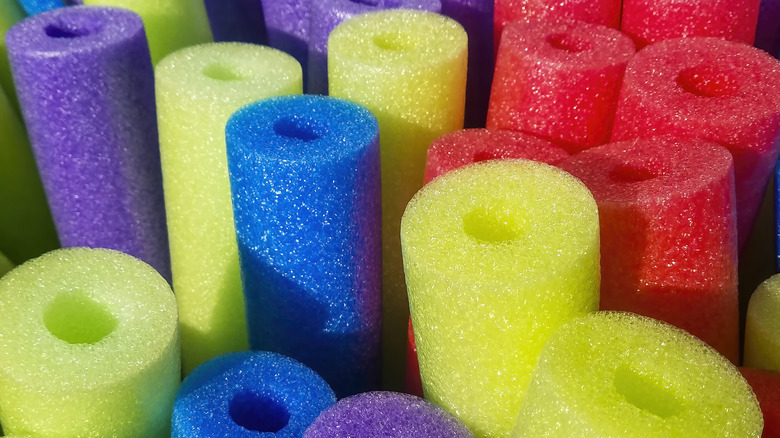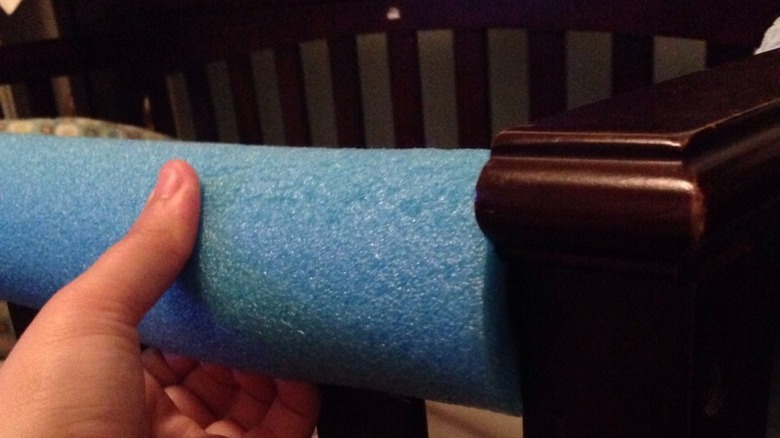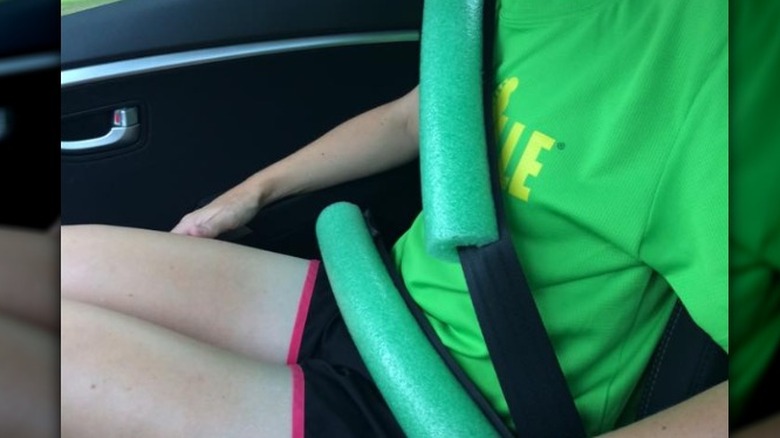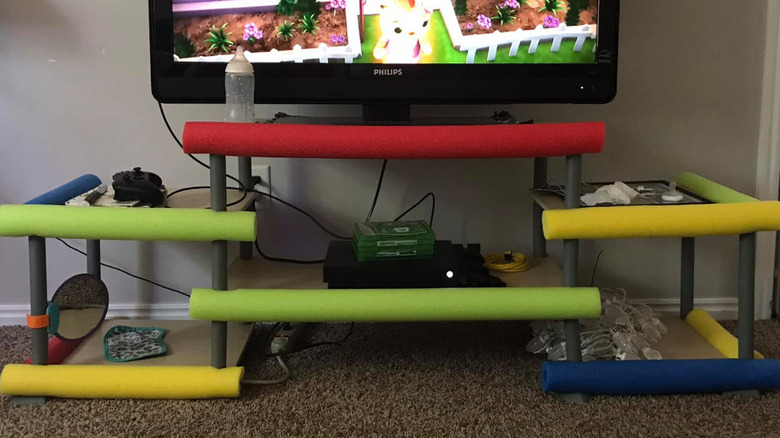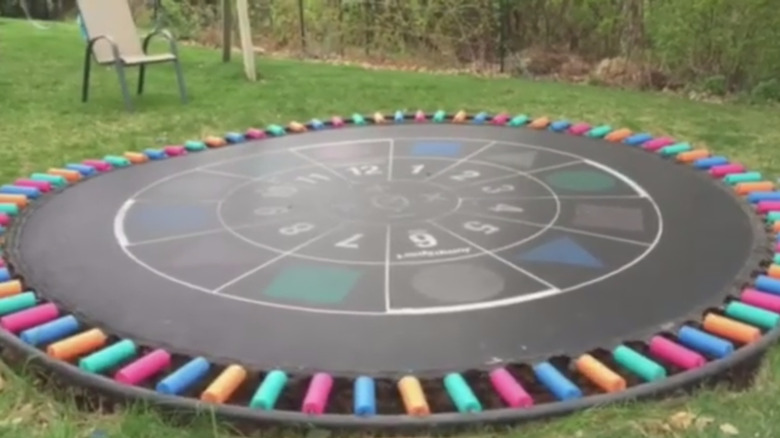5 Ways To Child-Proof Your Home Using Pool Noodles
As parents or caregivers, ensuring the safety of our little ones is always a top priority. From curious toddlers to active youngsters, their boundless energy can lead to unexpected accidents and mishaps around the house. But worry not! We have an ingenious and cost-effective solution for you: repurposing pool noodles for child-proofing purposes. Often associated with poolside fun, these foam tubes can quickly transform into effective safety measures to protect your children from common household hazards.
We'll explore five practical and creative ways to utilize pool noodles in this way around your home. Whether you're concerned about sharp edges or potential hazards around furniture or even toys, these simple DIY solutions will help you create a safer environment without compromising aesthetics. By incorporating pool noodles into your child-proofing strategy, you'll minimize the risk of accidents and add a playful touch to your home decor. Moreover, these adaptable solutions can be customized to fit your needs, ensuring a tailored approach for your child's safety.
So, let's dive in and discover some of the endless possibilities of using pool noodles to child-proof your home. From cots, seatbelts, and shelves to trampoline strings and bed rails, get ready to unlock a world of safety and peace of mind, all with the help of this simple and unexpected household item.
Cot edge bumper
Using a pool noodle on the edge of a cot is a smart and straightforward way to add an extra layer of safety for your little one. It provides a cushioned barrier that reduces the likelihood of your child getting hurt by bumping into the cot's edge. It is a cost-effective and easy-to-implement solution that enhances the safety and comfort of your child's sleeping environment.
Start by selecting a pool noodle that matches the length of the cot. Lay it alongside the cot's edge and mark the desired length. Using a sharp knife or scissors, carefully cut it to the measured size. Ensure a straight and clean cut for a snug fit. On one side of the pool noodle, make a slit running along its entire length. This opening will allow you to slip the pool noodle onto the cot's edge easily. Gently insert the pool noodle onto the cot's edge and apply even pressure along the length of the noodle to make sure it fits securely. Once in place, give it a gentle tug to ensure it is firmly attached to the cot. Make any necessary adjustments to make sure the fit is tight and secure. Periodically inspect the fit to confirm it remains securely in place. Over time, it may need readjustment or replacement if it becomes worn or damaged.
Added comfort for car journeys
Using a pool noodle to pad a child's seatbelt can provide added comfort and safety during car rides. To use a pool noodle as padding for a seatbelt, start by selecting a piece long enough to cover the length of the seatbelt that comes into contact with your child. Cut the pool noodle to create a slit along its length. Open the slit and wrap it around the seatbelt, positioning it in the area where the seatbelt rests against your child's body. The pool noodle acts as a soft cushion, providing a more comfortable experience for your child while preventing the seatbelt from digging into their skin or neck or causing discomfort during the journey. Ensure that the pool noodle is securely attached to the seatbelt and does not interfere with the proper functioning of the seatbelt.
Regularly inspect the padding to make sure it remains in good condition and replace it if necessary. Remember, using a pool noodle as padding should not compromise the effectiveness of the seatbelt. It is essential to always follow proper car seat safety guidelines and regulations.
Cushion sharp corners
Shelves can be another source of potential danger for children, especially if they have sharp corners or edges. You can repurpose a pool noodle to create a soft bumper that protects your child from accidental bumps and bruises.
Measure the length of the shelf edge that you want to child-proof. Cut a section of the pool noodle to match this length. Make a slit along the length, running from top to bottom. Open the slit of the pool noodle and fit it over the sharp edge of the shelf. Ensure that the pool noodle covers the hazardous area entirely, providing a cushioned barrier. If the pool noodle feels loose, use adhesive strips or strong double-sided tape to secure it in place. Repeat this process for each shelf that poses a risk to your child.
The pool noodle bumper creates a soft and protective barrier, reducing the risk of injuries and adding an extra layer of safety while allowing your child to explore and engage in a secure environment. Regularly inspect the shelf bumper to ensure it remains securely attached and in good condition.
Cover pesky trampoline springs
Covering trampoline springs with pool noodles is a smart way to enhance safety and reduce the risk of accidental injuries while jumping. This trick helps to create a cushioned barrier, minimizing the chance of injuries such as pinched fingers. This simple and inexpensive solution enhances the overall safety of the trampoline and provides peace of mind for parents and guardians.
Measure the length of the trampoline springs that you want to cover. Cut the pool noodles into sections that match the length of the springs. Make a slit along the length of each section, running from one end to the other. Ensure the slit is wide enough to fit over the trampoline springs. Place the sections individually over the trampoline springs, sliding them into position. If the pool noodles feel loose or slide out of position, you can use zip ties or strong tape to secure them in place. Ensure they are tightly attached to the springs. Repeat this process for all the trampoline springs, covering each one with a pool noodle section. You can use your imagination and create a pattern with brightly colored noodles, or stick to one color for a simpler effect.
Bed rail
Using a pool noodle as a bed rail is a simple and cost-effective way to add an extra layer of safety to your child's bed. To use a pool noodle as a bed rail, start by measuring the length of the bed rail you want to cover. Then, cut the pool noodle to the desired length using a sharp knife or scissors. Next, place the pool noodle along the side of the bed, aligning it with the edge of the mattress. You can secure the pool noodle in place by using zip ties or strong adhesive tape. Make sure the pool noodle is firmly attached and does not move easily. A simpler way to install is to simply place it under the fitted bottom sheet. The soft and cushiony pool noodle acts as a barrier, helping to prevent your child from rolling off the bed during sleep, providing added peace of mind.
Remember, while pool noodles can be helpful in child-proofing your home, they are not foolproof solutions. Always supervise your child and regularly inspect the installations to ensure they remain secure and in good condition. Additionally, pool noodles should never be used as a substitute for proper supervision and childcare measures.
